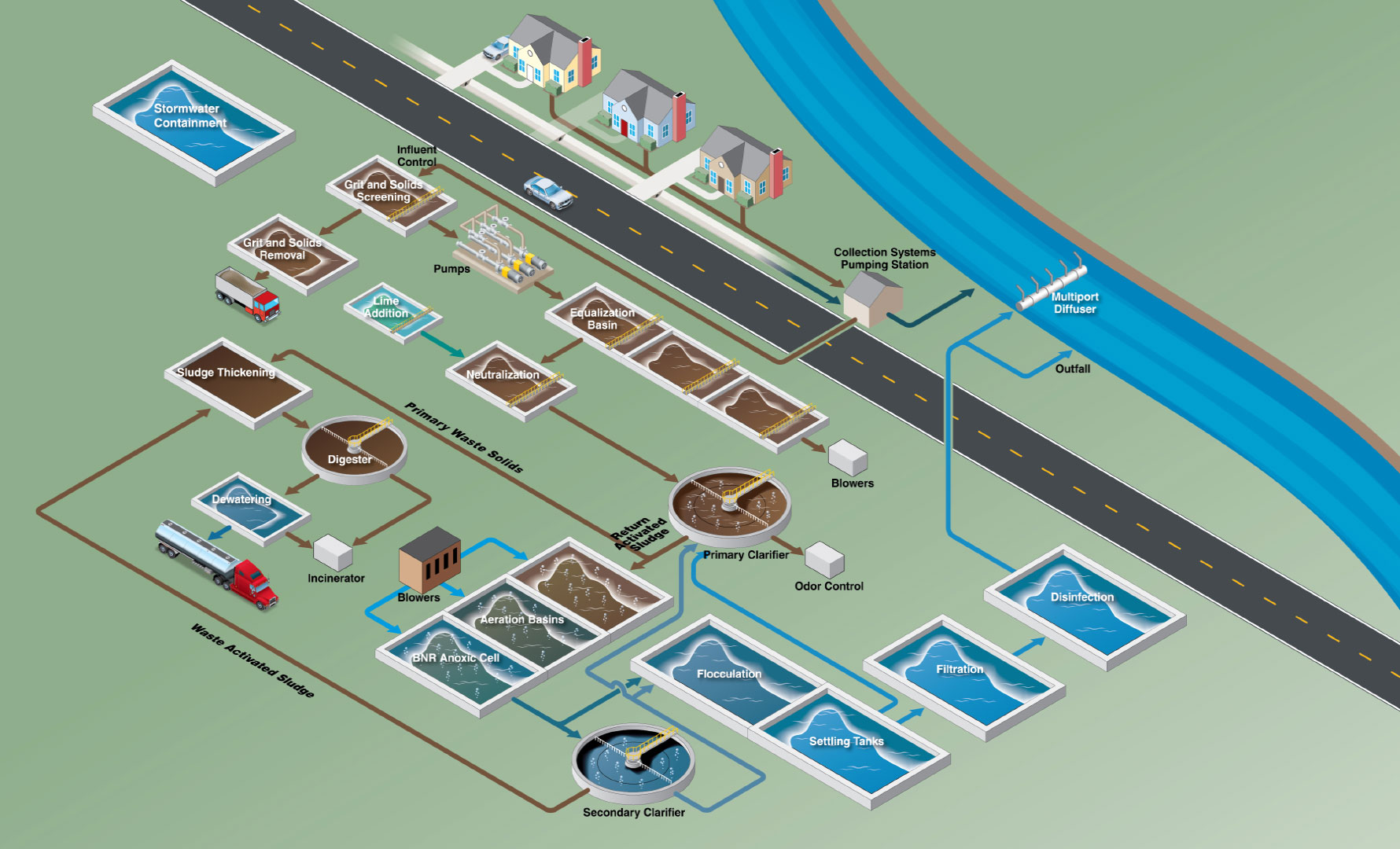- About
- Installations
- Industries
- Red Valve Products
- Tideflex Products
- Product Videos
- Rep Locator
- Resources
- Careers
- Home
- Contact
Please view this interactive map on a desktop.
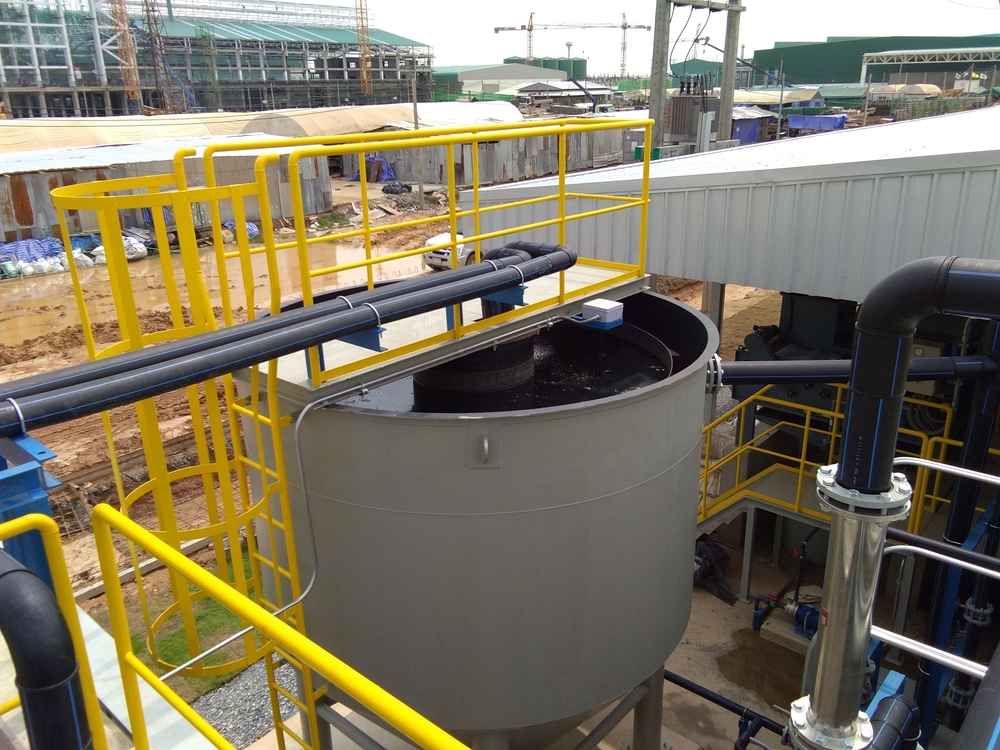 Sludge Thickening increases the solids concentration at the end of a process step within the activated sludge process. Thickening of sludge increases its solids content and reduces the volume of free water, thereby minimizing the unit load on downstream processes such as digestion and dewatering.
Sludge Thickening increases the solids concentration at the end of a process step within the activated sludge process. Thickening of sludge increases its solids content and reduces the volume of free water, thereby minimizing the unit load on downstream processes such as digestion and dewatering.
Solutions for Sludge Thickening:
• Aeration and Mixing Systems
• Hydraulic Recirculation and Mixing Systems
• Tideflex® Check Valves
• Control Pinch Valves
• Knife Gate Valves
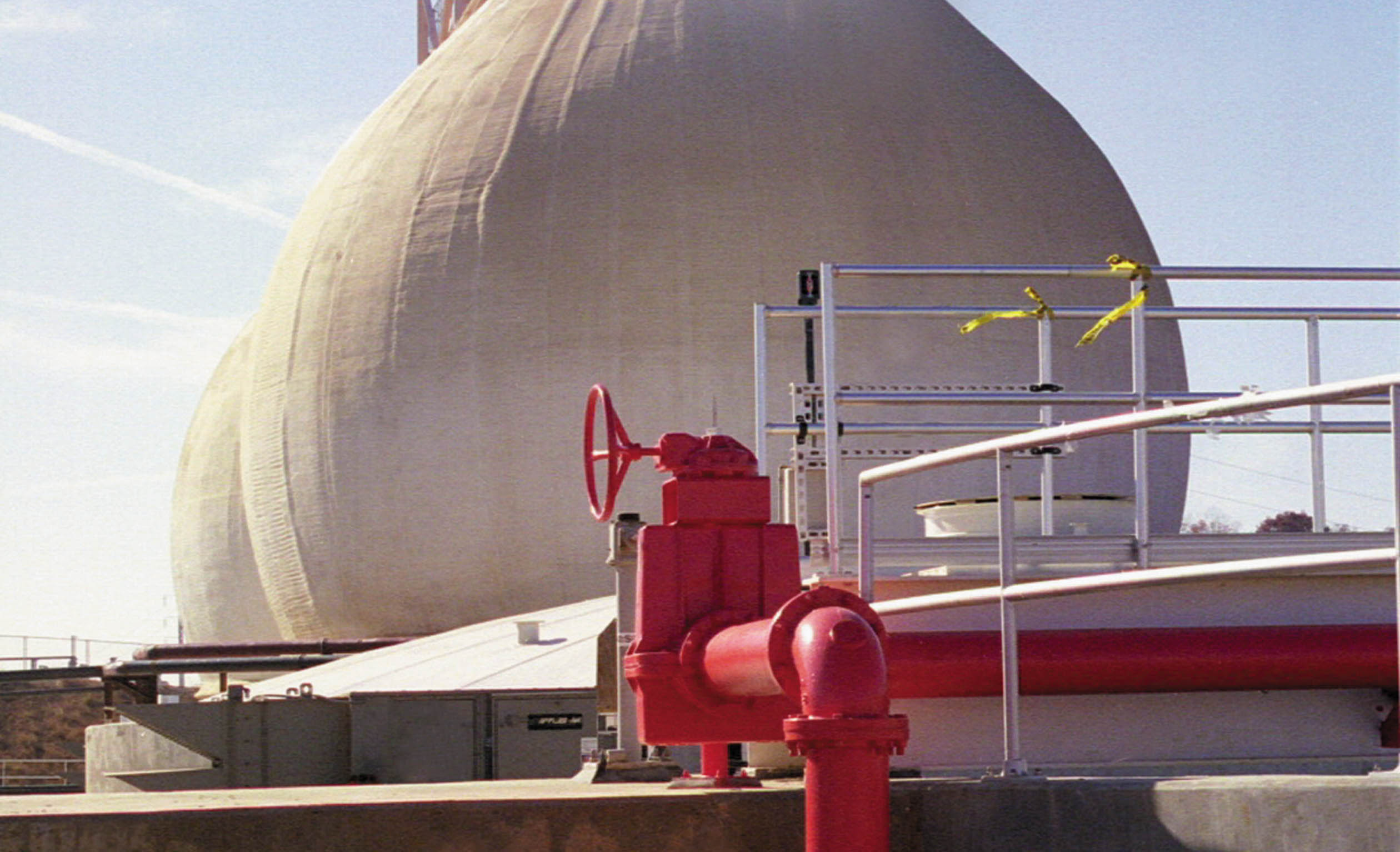 Digesters provide highly efficient mixing of waste activated sludge Unlike conventional digesters, egg digesters contain much smaller spots for solids to collect. Because the reduced surface area creates a smaller scum blanket, a higher percentage of waste is continuously mixed.
Digesters provide highly efficient mixing of waste activated sludge Unlike conventional digesters, egg digesters contain much smaller spots for solids to collect. Because the reduced surface area creates a smaller scum blanket, a higher percentage of waste is continuously mixed.
Solutions for Digesters:
• Aeration and Mixing Systems (Aerobic)
• Hydraulic Recirculation and Mixing Systems (Anaerobic)
• Tideflex® Check Valves
• Redflex Expansion Joints
• Manual Pinch Valves
• Control Pinch Valves
• Air Operated Pinch Valves
• Pressure Sensors
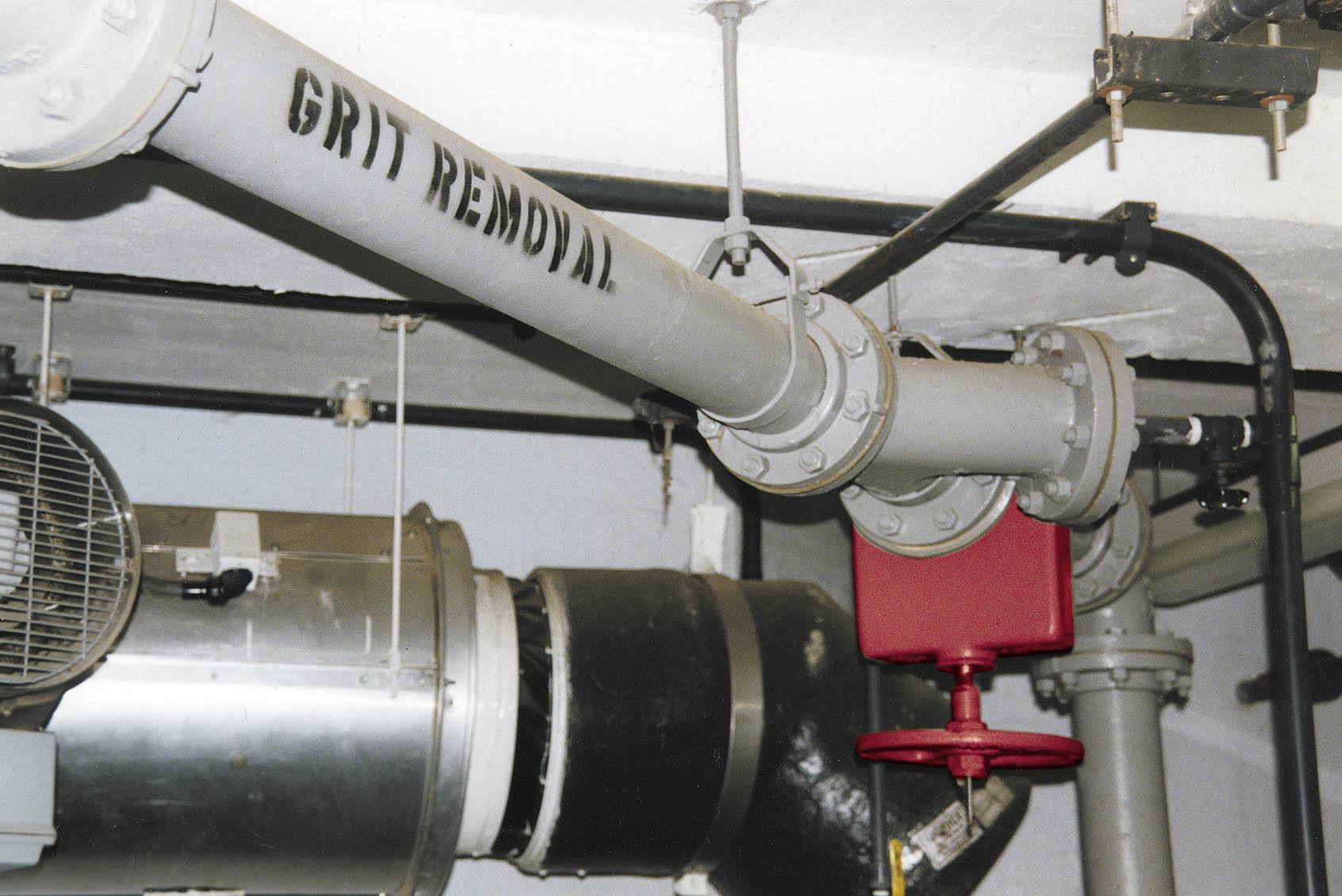 Grit and Solids Removal occurs during the pretreatment stage, when wastewater is passed through a bar screen to remove large debris. It then moves on to a de-grit chamber (aerated grit tank), where small solids, such as stones, gravel and metal particles, are removed.
Grit and Solids Removal occurs during the pretreatment stage, when wastewater is passed through a bar screen to remove large debris. It then moves on to a de-grit chamber (aerated grit tank), where small solids, such as stones, gravel and metal particles, are removed.
Solutions for Grit and Solids Removal:
• Aeration and Mixing Systems
• Redflex Expansion Joints
• Manual Pinch Valves
• Air Operated Pinch Valves
• Knife Gate Valves
• Pressure Sensors
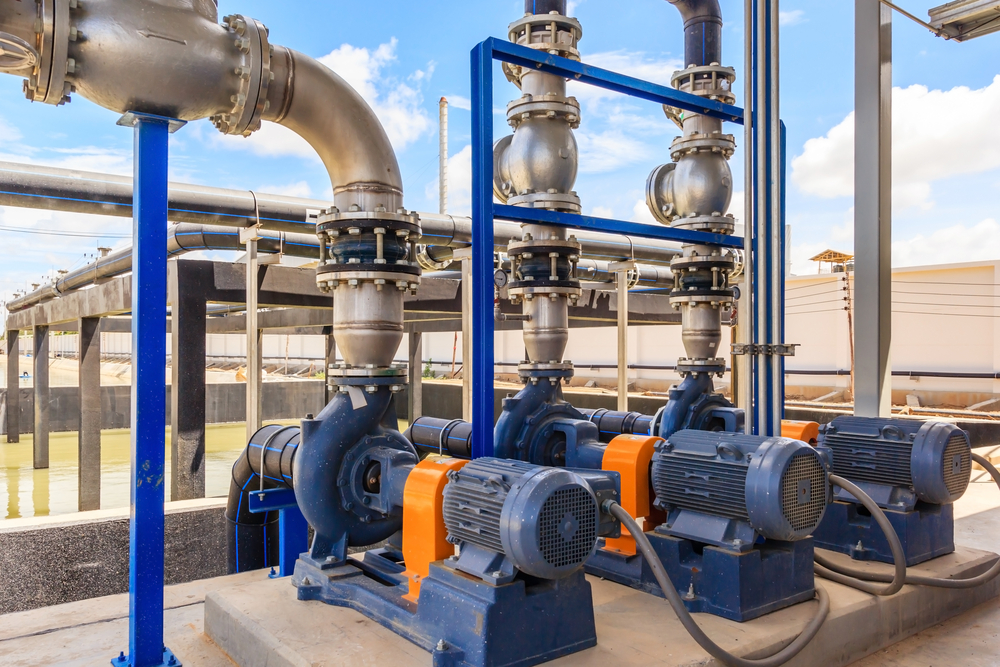 Pumps collect and transport wastewater within the wastewater treatment plant, in order to be treated and returned to the environment.
Pumps collect and transport wastewater within the wastewater treatment plant, in order to be treated and returned to the environment.
Solutions for Pumps:
• Tideflex® Check Valves
• Redflex Expansion Joints
• Effluent Diffuser Systems
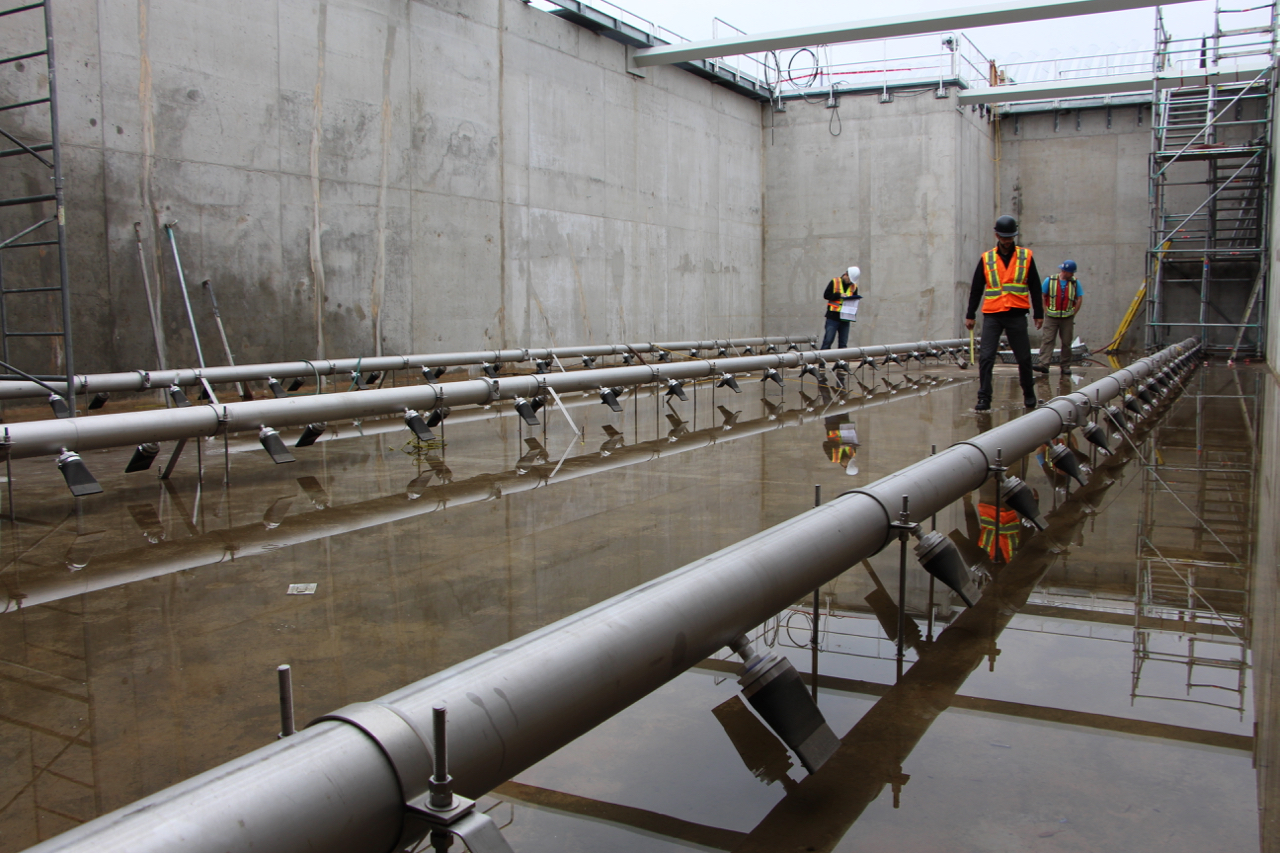 Aeration and Mixin g Systems will typically have two options for air diffuser systems. Fine bubble diffusers provide biological system requirements at a low airflow rate, but generally airflow has to be increased to provide sufficient mixing. Coarse bubble diffusers provide high mixing power, but need twice the airflow to meet oxygen requirements.
Aeration and Mixin g Systems will typically have two options for air diffuser systems. Fine bubble diffusers provide biological system requirements at a low airflow rate, but generally airflow has to be increased to provide sufficient mixing. Coarse bubble diffusers provide high mixing power, but need twice the airflow to meet oxygen requirements.
Solutions for Aeration and Mixing:
• Aeration and Mixing Systems
• Hydraulic Recirculation and Mixing Systems
• Redflex Expansion Joints
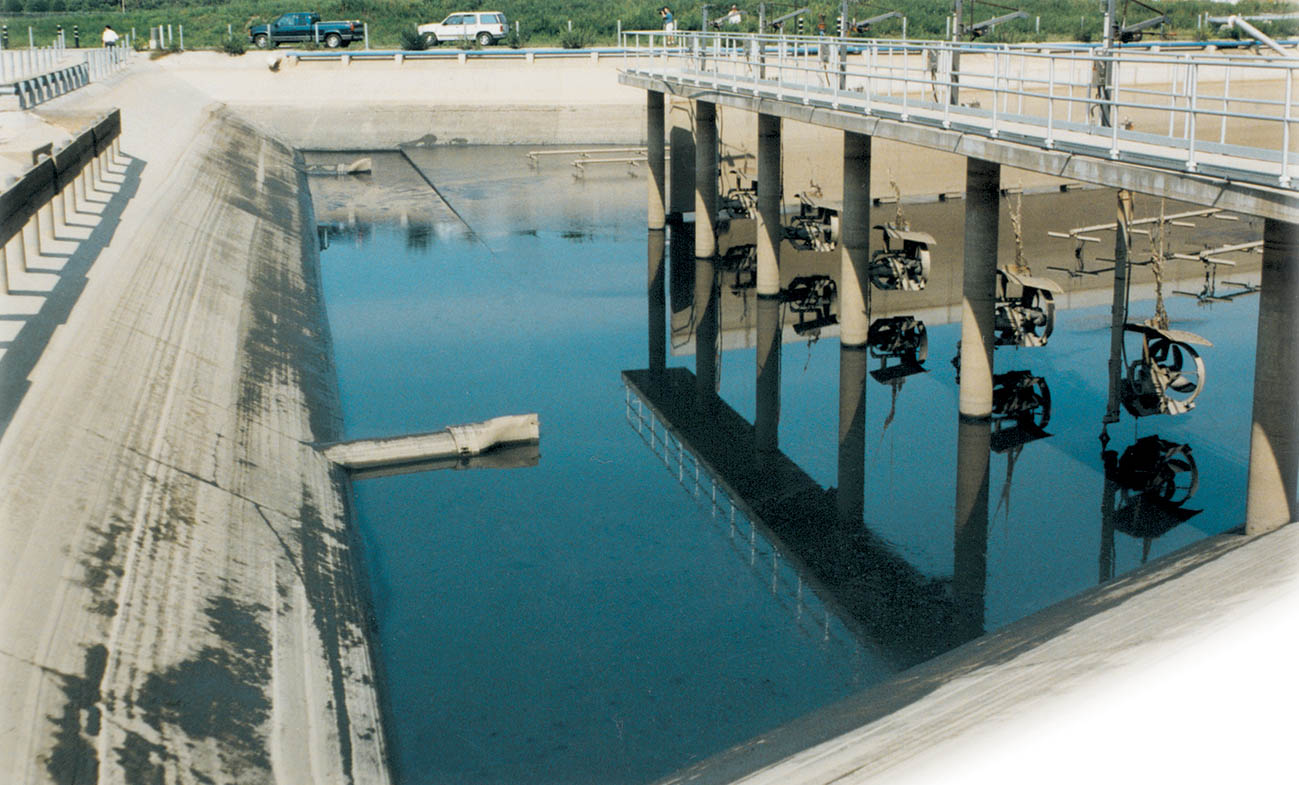 Equalization Basins are designed to provide consistent influent flow to the downstream processes by retaining high flow fluctuations. Providing consistent flow and loading to a biological process is important to maintain optimal treatment.
Equalization Basins are designed to provide consistent influent flow to the downstream processes by retaining high flow fluctuations. Providing consistent flow and loading to a biological process is important to maintain optimal treatment.
Solutions for Equalization Basins:
• Aeration and Mixing Systems
• Tideflex® Check Valves
• Manual Pinch Valves
• Control Pinch Valves
• Pressure Sensors
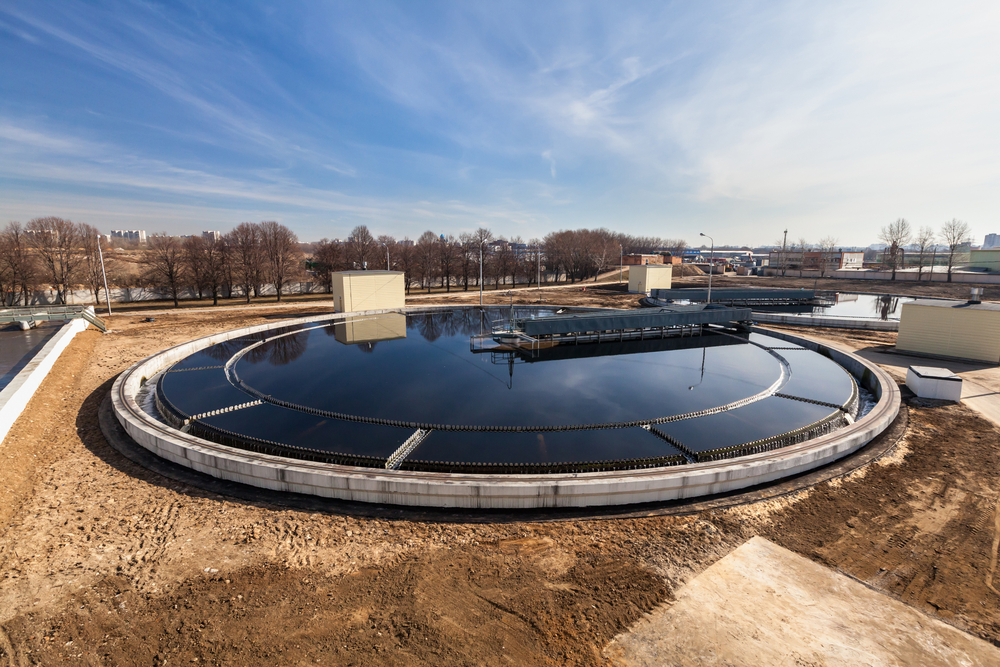 Secondary Clarifiers are a circular basin in which effluent from the activated sludge process is held for a period of time during which the heavier biomass settle to the bottom as activated sludge.
Secondary Clarifiers are a circular basin in which effluent from the activated sludge process is held for a period of time during which the heavier biomass settle to the bottom as activated sludge.
Solutions for Secondary Clarifiers:
• Manual Pinch Valves
• Air Operated Pinch Valves
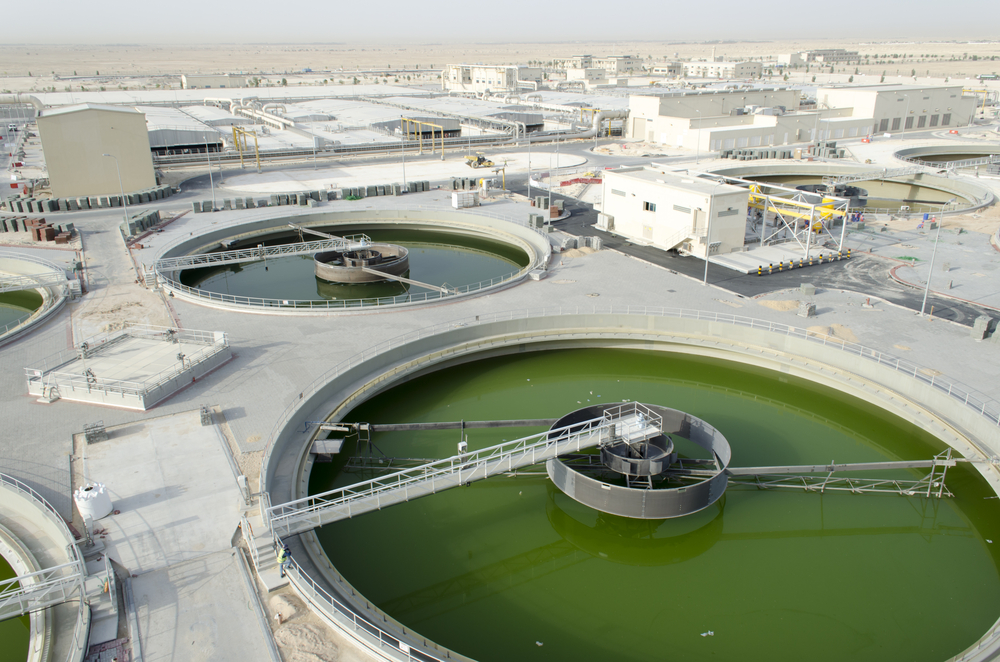 Primary Clarifiers are generally used in to remove solid particulates or suspended solids from liquid for clarification and/or thickening. Concentrated impurities, discharged from the bottom of the tank are known as sludge, while the particles that float to the surface of the liquid are called scum.
Primary Clarifiers are generally used in to remove solid particulates or suspended solids from liquid for clarification and/or thickening. Concentrated impurities, discharged from the bottom of the tank are known as sludge, while the particles that float to the surface of the liquid are called scum.
Solutions for Primary Clarifiers:
• Aeration and Mixing Systems
• Manual Pinch Valves
• Air Operated Pinch Valves
• Pressure Sensors
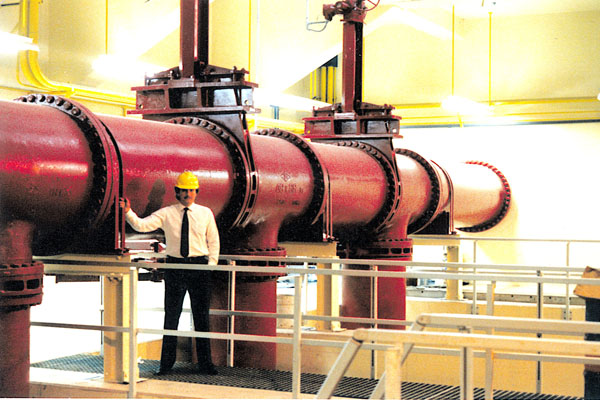 Pumping Stations, also called lift stations, are designed to handle raw sewage that is fed from underground gravity pipelines. Sewage is fed into and stored in an underground pit, commonly known as a wetwell. Wetwells require mixing and dissolved oxygen.
Pumping Stations, also called lift stations, are designed to handle raw sewage that is fed from underground gravity pipelines. Sewage is fed into and stored in an underground pit, commonly known as a wetwell. Wetwells require mixing and dissolved oxygen.
Solutions for Pumping Stations:
• Aeration and Mixing Systems
• Tideflex® Check Valves
• CheckMate® UltraFlex™ Inline Check Valves
• Knife Gate Valves
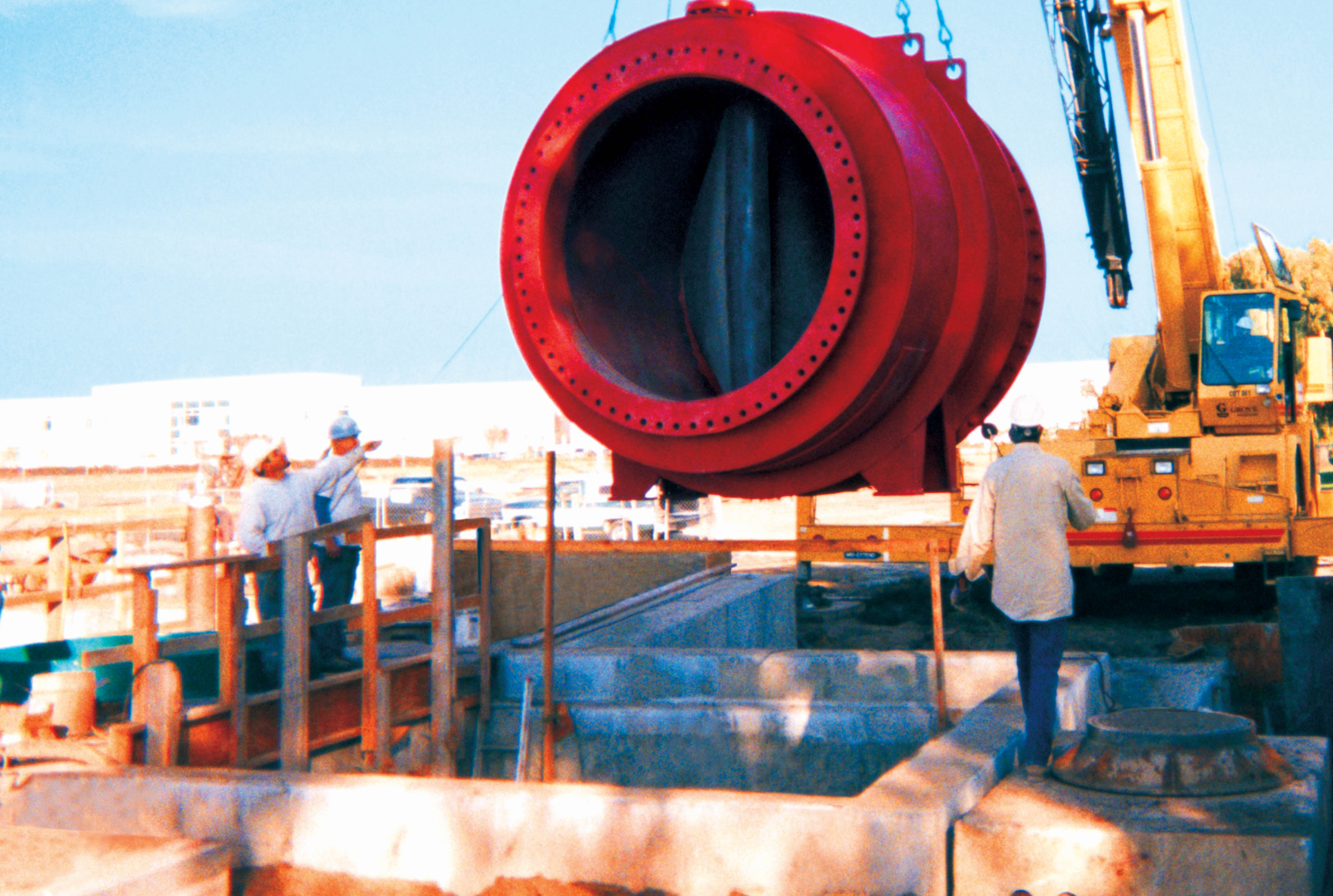 Collection Systems are sewers that are designed to collect rainwater runoff, domestic sewage and industrial wastewater in the same pipe. Collection systems transport wastewater to a sewage treatment plant, where it is treated and then discharged to a water body.
Collection Systems are sewers that are designed to collect rainwater runoff, domestic sewage and industrial wastewater in the same pipe. Collection systems transport wastewater to a sewage treatment plant, where it is treated and then discharged to a water body.
Solutions for Collection Systems:
• Tideflex® Check Valves
• CheckMate® UltraFlex™ Inline Check Valves
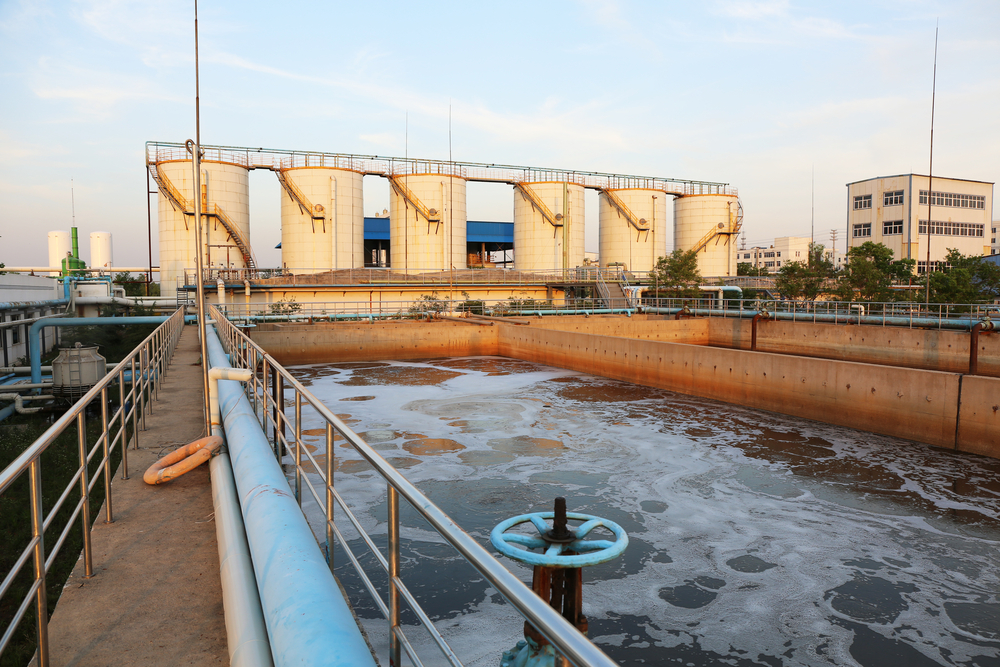 Filtration, Disinfection and Post Aeration are usually the final stage in the water treatment process in order to limit the effects of organic material, suspended solids and other contaminants have upon discharging to the environment.
Filtration, Disinfection and Post Aeration are usually the final stage in the water treatment process in order to limit the effects of organic material, suspended solids and other contaminants have upon discharging to the environment.
Solutions for Filtration, Disinfection and Post Aeration:
• Aeration and Mixing Systems
• Manual Pinch Valves
• Control Pinch Valves
• Air Operated Pinch Valves
• Pressure Sensors
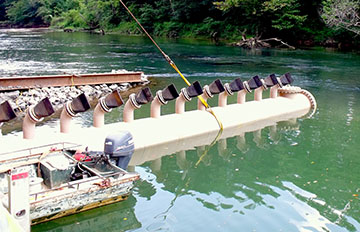 Effluent Outfall Systems are used for discharging and diffusing treated wastewater into a sea, river or lake.
Effluent Outfall Systems are used for discharging and diffusing treated wastewater into a sea, river or lake.
Solutions for Effluent Outfall Systems:
• Tideflex® Check Valves
• Effluent Diffuser Systems
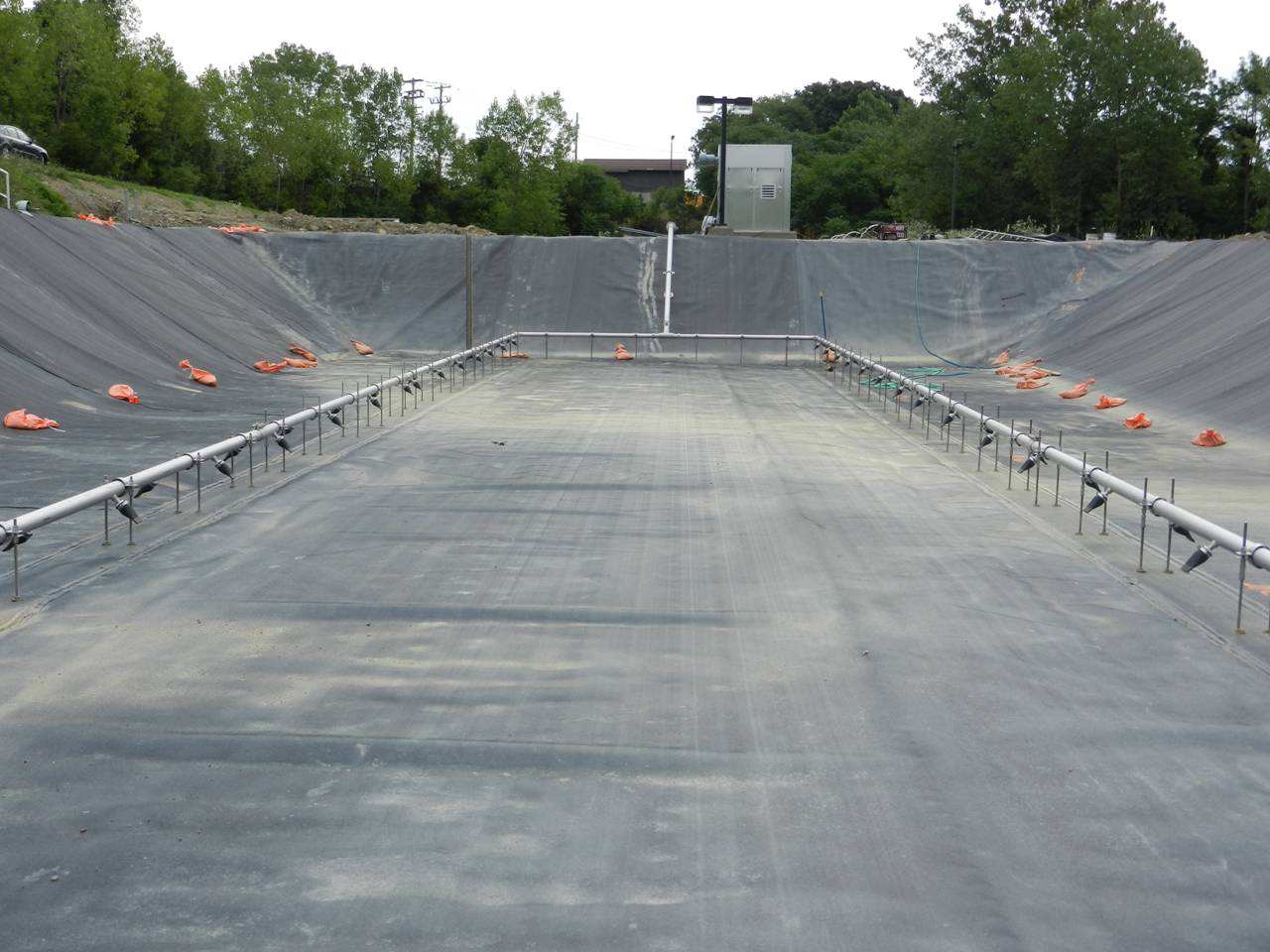 Stormwater Containment is comprised of large volume tanks or lagoons designed to capture the first run-off's and also storm surge events. These tanks require mixing of the solids and an oxygen supply to keep the process fluid aerobic.
Stormwater Containment is comprised of large volume tanks or lagoons designed to capture the first run-off's and also storm surge events. These tanks require mixing of the solids and an oxygen supply to keep the process fluid aerobic.
Solutions for Stormwater Containment:
• Aeration and Mixing Systems
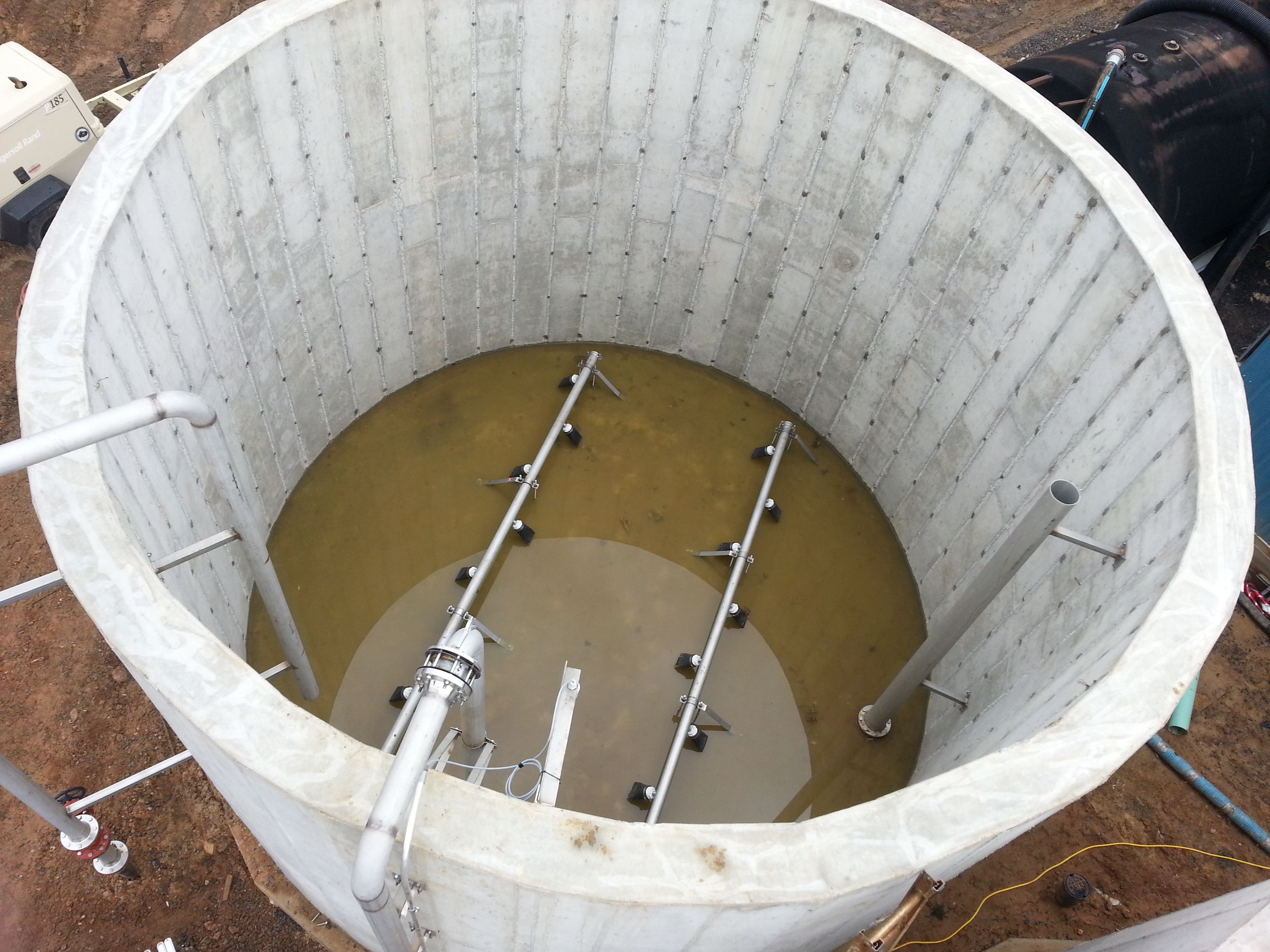 Lime Stabilization Systems are needed when lime is added to process fluids and sludges to stabilize the pH. The lime is in powder form and requires high energy mixing to dissolve into the fluids.
Lime Stabilization Systems are needed when lime is added to process fluids and sludges to stabilize the pH. The lime is in powder form and requires high energy mixing to dissolve into the fluids.
Solutions for Lime Stabilization Systems:
• Aeration and Mixing Systems
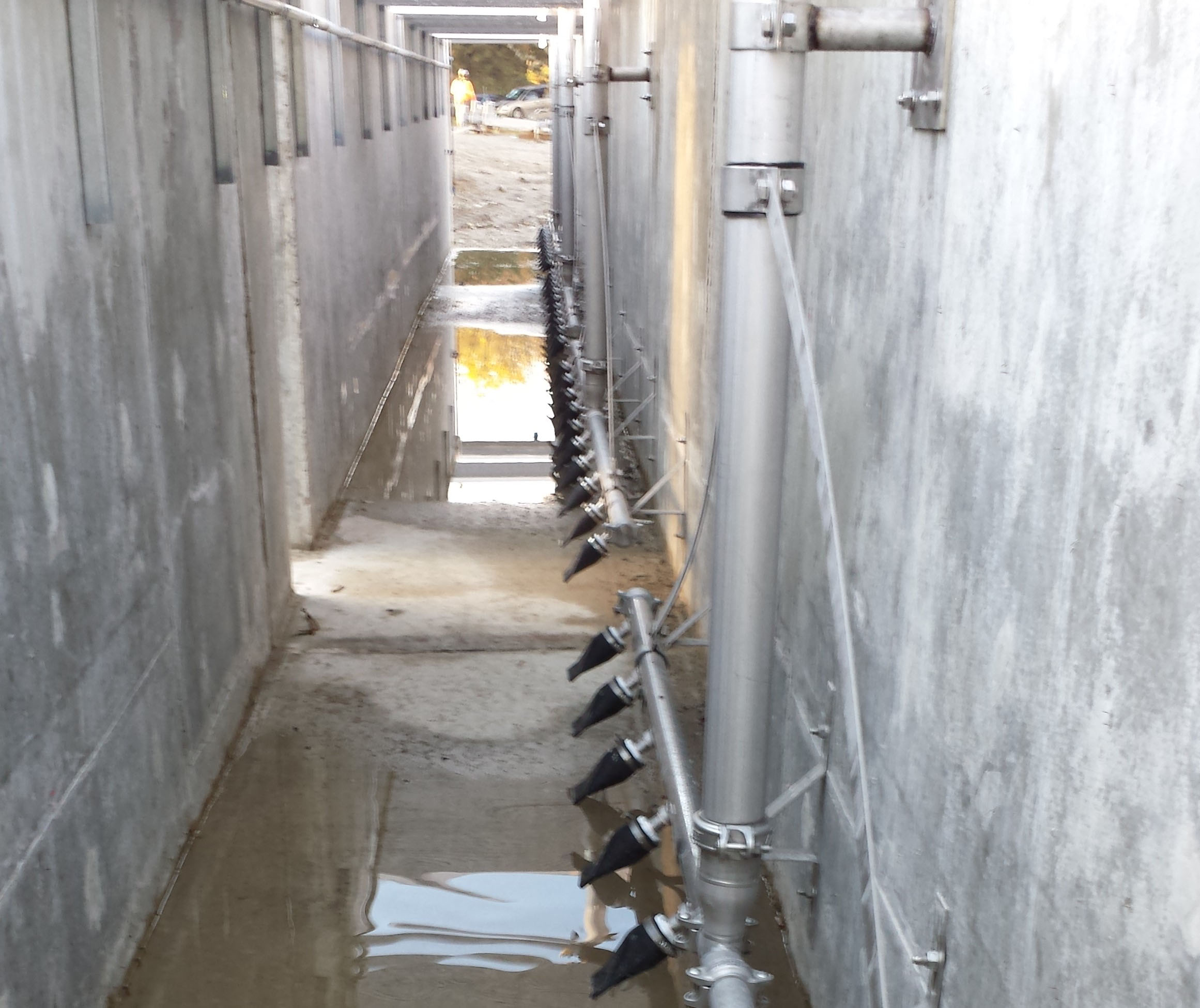 Rectangular Channels are utilized to carry wastewater to various process tanks. Their channels provide capacity for excess hydraulic loading. They are susceptible to solids accumulation and low dissolved oxygen.
Rectangular Channels are utilized to carry wastewater to various process tanks. Their channels provide capacity for excess hydraulic loading. They are susceptible to solids accumulation and low dissolved oxygen.
Solutions for Rectangular Channels:
• Aeration and Mixing Systems
• Hydraulic Recirculation and Mixing Systems
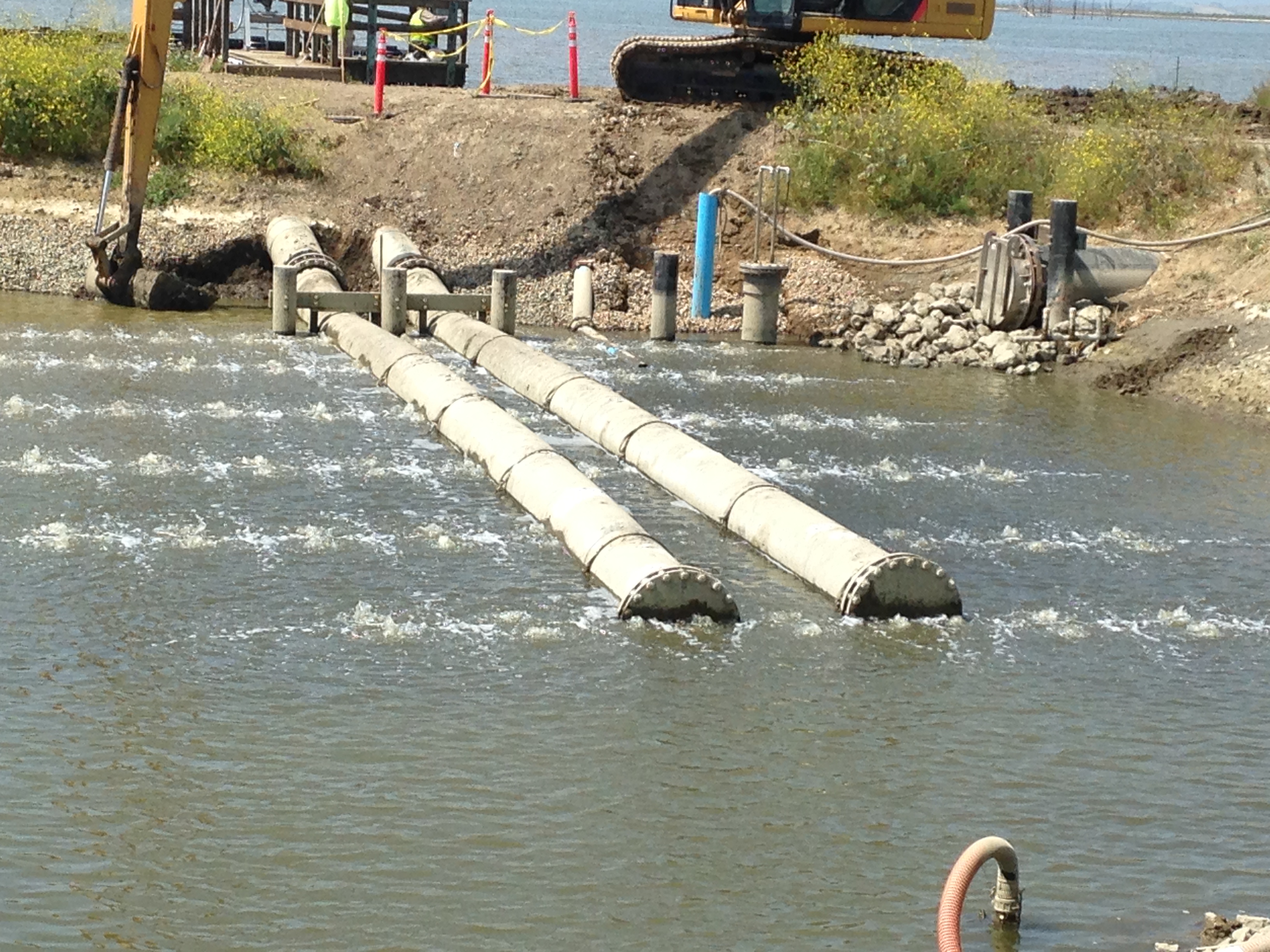 Air Curtains and Barriers are used to prevent sediment in consrtuction areas from being carried by currents. They are also used as freeze prevention barriers for water intake structures.
Air Curtains and Barriers are used to prevent sediment in consrtuction areas from being carried by currents. They are also used as freeze prevention barriers for water intake structures.
Solutions for Air Curtains and Barriers:
• Aeration and Mixing Systems
Click the “ ’s” to view RedValve Product Solutions
’s” to view RedValve Product Solutions


